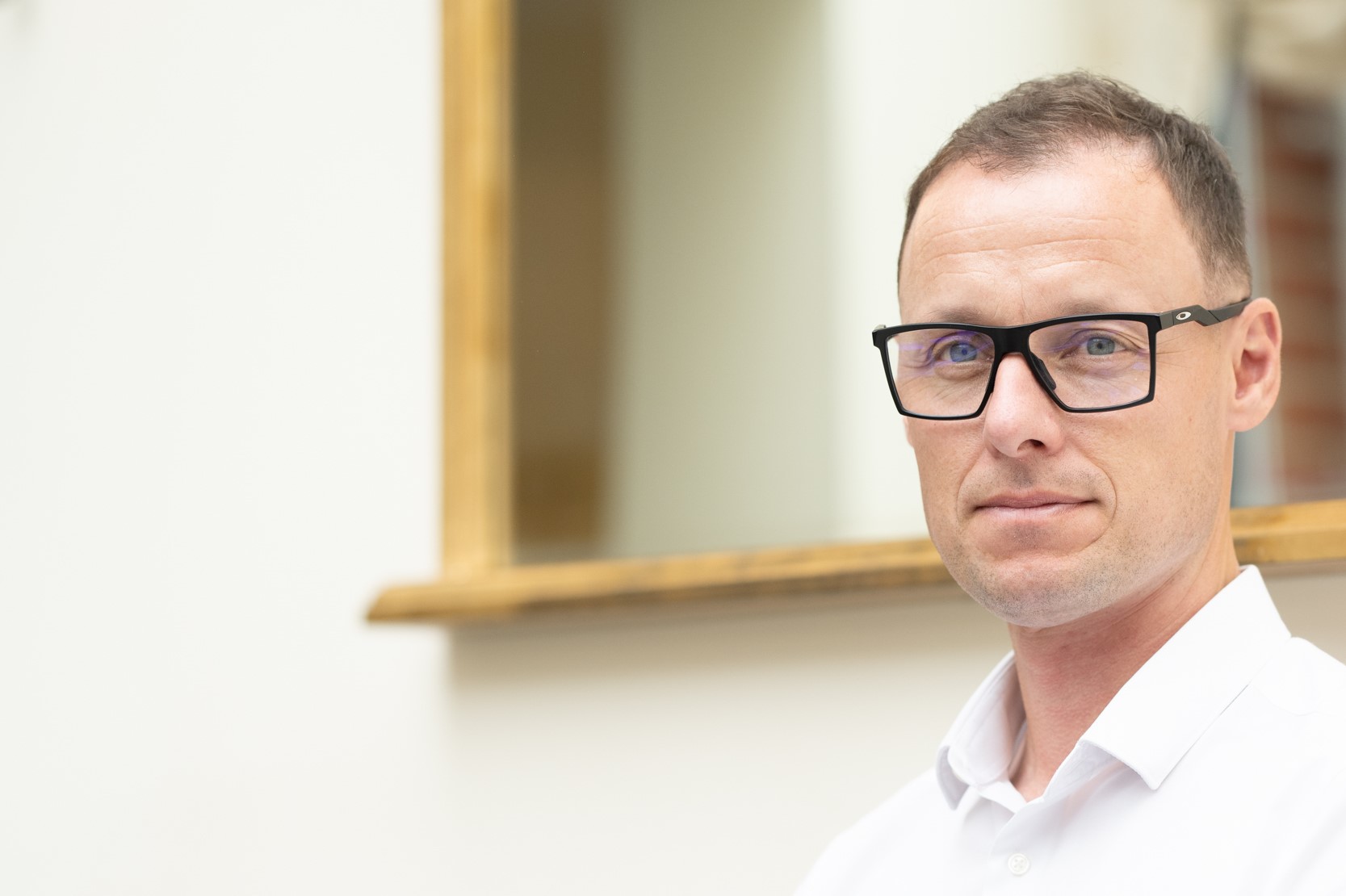Every year on November 8, World Ventil8 Day (WV8D) reminds us of the importance of ventilation and indoor air quality (IAQ) for the health of our buildings and the people who occupy them.
In honour of this year’s theme – “enabling action” – HVAC&R News reached out to one of the driving forces behind WV8D, Nathan Wood. Aside from serving as the working group lead for WV8D, Wood is the managing director of Farmwood M&E Services, a British mechanical and engineering company specialising in ventilation.
Wood took the time to share his own journey and talk to HVAC&R News about what he and the WV8D team hope to achieve.
HVAC&R News: What is your background and how did it lead you to becoming chair of the WV8D Working Group?
Nathan Wood: My journey kicked off as a multi-skilled apprentice in a steel foundry – electrical, mechanical, and fabrication work. A proper time-served apprenticeship with some amazing mentors. I loved it there, but looking back, it was so polluted that it wouldn’t surprise me if those metal particles are still sitting in my lungs.
Three months after I finished my apprenticeship, the steelworks closed down. Just like that, 100s of us were out of a job. Around the same time, my father started Farmwood Ltd. He was a senior engineer himself, finally with enough connections to branch out. But there was only enough work for him back then, so off I went, looking for work.
I got lucky and landed a job as a shift engineer in a food production factory. It was the cleanest place I’d ever seen, the complete opposite to the steel mill where I’d honed my skills.
After nine months of shift work, my dad asked me to join him. Going back to a day job seemed sensible, even if I thought it’d be temporary at the time.
23 years later, I’m still here, now managing director of a fantastic team of 38 people. I’ve gone from engineer, to engineering manager, to technical director, and now MD.
We’ve always specialised in ventilation systems – domestic, commercial, and industrial – plus, a bit of mechanical and electrical engineering, as well as air conditioning. Our growth has been steady, supported by major UK ventilation manufacturers who’ve partnered with us as their service team and some amazing clients. And we’ve always been big on apprenticeships – guaranteeing all our apprentices a job once they qualify. They’re the heartbeat of our business.
It was 2015 when my second son was born, and one night during a feed – baby in one arm, phone in the other – I set up my first LinkedIn account. I started connecting with anyone using #HVAC or #Ventilation and noticed some people in the US talking about IAQ. That night, I fell down the rabbit hole of air quality research. The lightbulb moment hit: what we’d been doing all these years wasn’t just ventilation – it was improving indoor air quality and ultimately, people’s health.
The next day, I called a meeting, though I probably mumbled through the explanation. I told the team IAQ was going to be the next 20+ years of our business, and we needed to set up an IAQ division. Our mission was set, and my journey into the world of IAQ began.
Fast forward two years to 2017, and we heard the BBC’s DIY SOS was coming to my hometown for a big build project. We knew we had to get involved. I downloaded the plans and saw they were demolishing an old bungalow and building a new home. So, we designed a full mechanical ventilation with heat recovery (MVHR) system and managed to integrate one of the first basic IAQ monitors with Internet of Things (IoT) compatibility. The producers were a bit resistant at first, but I talked them around.
We were lucky to get the whole MVHR system sponsored, along with the ductwork and IAQ monitor. Our team worked all hours to get it done. It was an amazing experience.
Long story short, the family were over the moon with their new home, especially the systems and monitors we’d provided. It was a UK first at the time.
Now, I can’t say it was all down to the project, but it made a real impact on their lives. Their son, Curtis –known as Curly – had been hospitalised every autumn/winter with serious respiratory issues. The slightest infection would hit him hard due to his compromised immune system. But in the years since the Big Build project, Curly hasn’t been hospitalised for his usual seasonal respiratory problems.
That story was the one I shared at the BESA National Conference. Off the back of it, they asked me to chair their IAQ Group, which I gladly accepted.

We formed a core committee and a wider group, with great support from the association and manufacturers. Together, we produced multiple IAQ guides, including a recent one on mould and damp.
Off the back of that success, I was invited to a conference in Brussels for GCP Europe. They asked me to chair their IAQ Taskforce and lead the charge on the EPBD. Speaking at a European level was something else, and it led to us having an IAQ session in the European Parliament with other top associations.
These experiences really opened my eyes to the disconnect between engineers on the ground and academics, with associations caught in the middle. We need to collaborate better to improve everyone’s knowledge.
It was at a conference in London where I met Professor Cath Noakes and some senior figures. We all agreed more needed to be done. From that moment, an altruistic collaboration was set in motion. Not long after, at a BESA meeting, Graeme Fox talked about the success of World Refrigeration Day. He suggested we should have a day for ventilation. We all thought it was a fantastic idea, and got to work on making it happen.
Who’d have thought that since its launch, World Ventil8 Day would win an industry award and continue to grow globally? All thanks to the collaboration across the world.
Earlier this year, sadly, Graeme stepped down from the association. But because I’d been involved since the start, the team invited me to chair the working group this year.
The theme this year is “enabling action”. Can you tell us how you arrived at the theme and why it is so important in improving indoor environments?
In preparation for WV8D, the team met to brainstorm ideas, and I think it was a comment along the lines of “less talk, more action” that sparked what’s now become our theme: “enabling action.” We want to celebrate everything that’s brilliant about ventilation – how we can help people improve ventilation in their buildings, whether it’s a home, a school, a workplace, or a community space. We’re also highlighting ventilation’s essential role in creating healthy buildings and healthier lives.
It’s easy to treat a special day as just a business opportunity, but what we’ve found is that global support for WV8D comes from the heart, not just the head. We understand that this isn’t just about ventilation; it’s about people’s health and well-being in the spaces they occupy.
You are based in the UK – can you sum up the state of play with ventilation and IAQ over there? What are the main things you are working on?
In the UK, ventilation has long been dubbed the “Cinderella industry” – a forgotten trade. For years, any multi-tradesperson could install ventilation systems, especially domestic ones, without specialised training.
Back in summer 2016, however, a new competency course was introduced to the industry, backed by UK ventilation manufacturers, aiming to improve domestic installations – especially MVHR systems – with a sharp focus on IAQ and health. Then in 2021, Approved Document F for ventilation was revised, coming into force in 2022 and including key points on IAQ and carbon reduction. Yet, despite these regulatory changes and new training courses, the domestic sector still suffers from poorly installed ventilation systems, with a race-to-the-bottom mentality often leading to substandard workmanship.
As a business, we made the decision to withdraw from full system installations unless we could oversee the entire package, from design through to commissioning and handover. It’s frustrating to admit we spend more time correcting and improving other people’s subpar installs than completing full projects ourselves. This is exactly why I’ve pushed hard within the association to raise standards.
In the UK, real change began in response to the Grenfell disaster and the resulting Building Safety Act of 2022, which elevated the competence and compliance agenda. The Act requires proof of National Occupational Standards (NOS) and an individual’s skills, knowledge, experience, and behaviours (SKEB). I passionately advocated for the development of NOS for ventilation systems – domestic, commercial, and IAQ. Fortunately, BSE Skills, a partnership of organisations from across the HVAC&R sector, secured funding and approval to develop these NOS standards, and I’m proud to be part of the team driving this change forward.
You mentioned that sharing knowledge around the world is one of the aims of WV8D. Any initiatives or breakthroughs in other countries you would like to celebrate?
From my time working and holidaying in Europe, I was thrilled to learn that Belgium mandated the use of IAQ (CO₂) monitors in all public spaces as a proxy for assessing ventilation quality. I saw it as a huge step forward, with potential for the data to be analysed and used to improve ventilation systems and, ultimately, people’s health. However, while on holiday in Belgium with my family, I found myself – ever the IAQ advocate – on the lookout for these CO₂ monitors. Eventually, I spotted one in an amusement arcade. The CO₂ reading was 2,300 PPM with a sad face indicator.
Looking around, I noticed the place wasn’t very busy, and there were no ventilation grills in sight. So, naturally, I asked the assistant at the counter about the monitor. Their response was, “Oh, I don’t know, they fitted that a while back. We don’t really pay attention.” It was a moment of disbelief but also a clear example of a missed opportunity to engage businesses on how these monitors work and the benefits they bring, not just for visitors’ health but for staff wellbeing, too. This experience only reinforces our call to “enable action” this year – not just ticking boxes, but engaging with everyone on a meaningful social level as well.
Recently, the Council of the EU took another major step forward, adopting a directive that sets new, more ambitious ambient air quality standards across the region. This move is a vital part of the EU’s vision to achieve zero pollution by 2050. The revised regulations align more closely with the World Health Organization (WHO) recommendations and aim to significantly reduce the public health impacts of air pollution. While this directive primarily targets outdoor air quality, its ripple effects promise substantial benefits for indoor air quality as well, providing a cleaner baseline that positively impacts indoor environments, from homes to workplaces to public spaces.
However, globally, we still lack comprehensive standards and limits for IAQ, which is why I’m involved in a groundbreaking global initiative called GO AQS, created by the visionary Sotirios Papathanasiou. At GO AQS, we operate under a simple but profound premise: we share one planet, one atmosphere. Clean air is the birthright of every living being, yet air quality still varies dramatically across the globe.
Our focus is on establishing a universal air quality index, fully aligned with the 2021 WHO Air Quality Guidelines for ambient air. By setting global standards and a unified air quality index, we can work towards a world where everyone, everywhere, breathes the same healthy air. That’s the dream – the legacy we aim to leave behind.
 Nick Johns-Wickberg
Nick Johns-Wickberg


Leave a Reply